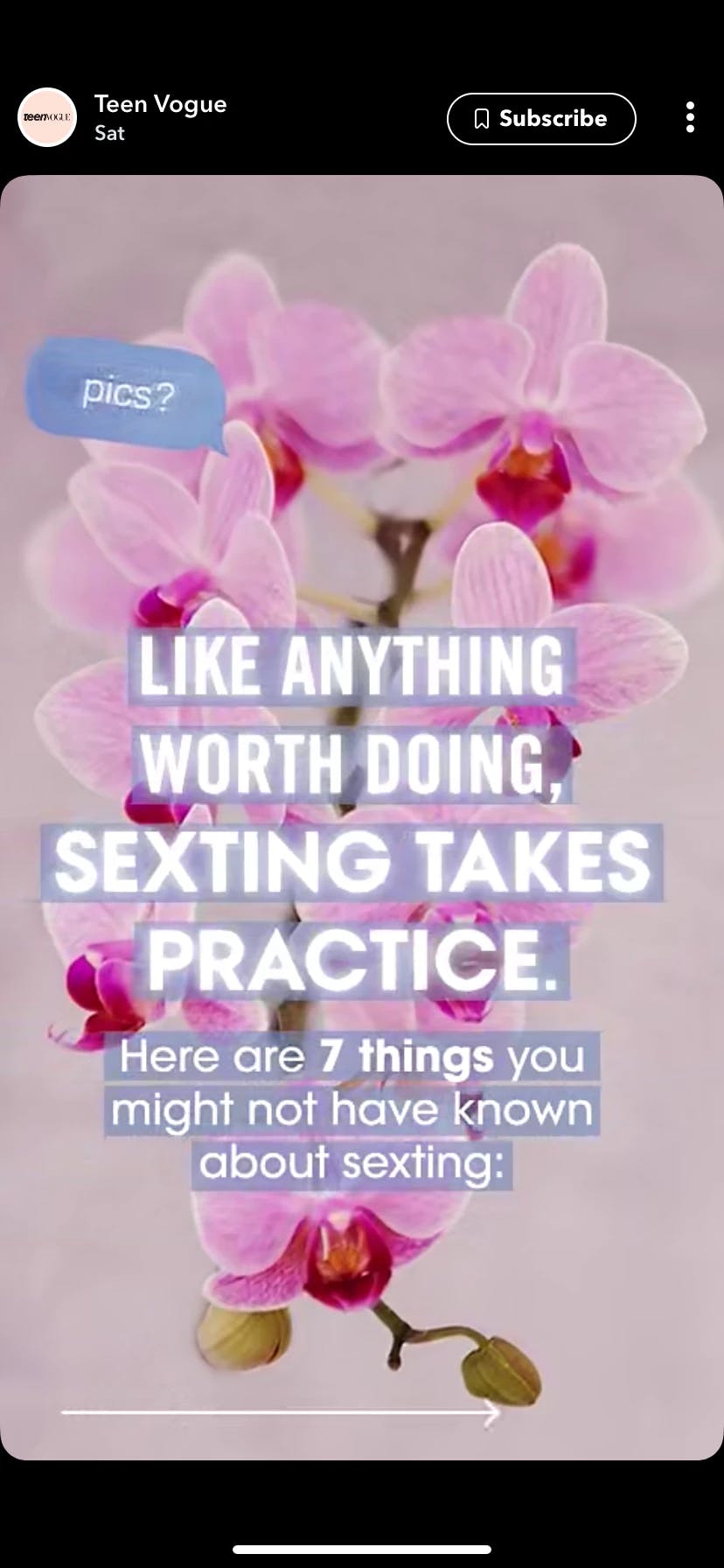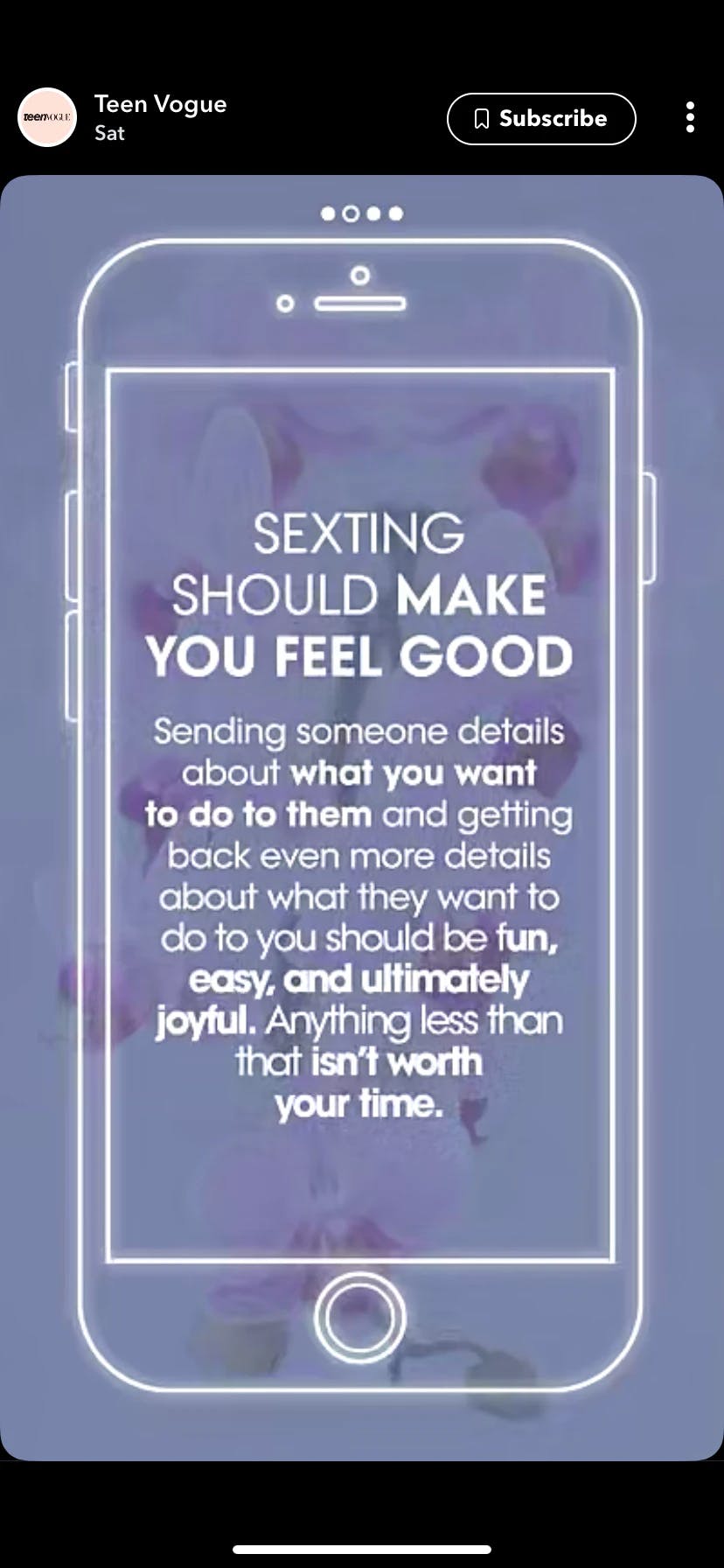Snapchat And Teen Vogue Are Encouraging Teens To Make Porn
Teens use social media, particularly Snapchat, more than any other demographic. With the recent lockdowns, many teens are finding themselves with unlimited screen time and an increased need for human interaction. This, combined with the sexually explicit content Snapchat and Teen Vogue push, creates the perfect storm for sexual predators.

Teen Vogue and Snapchat Promote Teen Sexting
The National Center on Sexual Exploitation (NCSE) has recently accused Snapchat and Teen Vogue of encouraging the creation of “child pornography” with their content regarding sexting. The organization fights sex trafficking and prostitution, discusses the dangers pornography poses to public health, and works to put an end to child sexual abuse.
The group is attempting to encourage Snapchat to discontinue featuring Teen Vogue’s stories promoted through the app’s “Discover” feature whereby nearly half of the platform’s daily 218 million users can view content from a wide variety of media sources. In an interview with Daily Caller, Dawn Hawkins, the executive director of the NCSE, said that “with the likely surge of young viewers on Snapchat due to quarantine, it is socially irresponsible for Snapchat Discover to encourage minors to self-produce underage pornography (i.e. child sexual abuse materials), thereby increasing their vulnerability to sexual predators.”
It is socially irresponsible for Teen Vogue and Snapchat Discover to encourage minors to self-produce underage pornography.
On March 23, Snapchat featured a Teen Vogue story entitled “How to Sext: The Best Tips and Tricks” that detailed “7 things you might not have known about sexting.” The story went on to state things like “sexting should make you feel good” and “there all kinds of creative, fun ways to sext.” The NSCE says that teaching teens (who are still children) to sext allows “online predators [who] use social media platforms to pose as peers and groom children to send them sexually explicit material (i.e. ‘sext’ with them) that they can then distribute and/or use to blackmail the child into other forms of sexual exploitation.”

In her interview with the Daily Caller, Hawkins laments that “what Teen Vogue is doing by promoting sexing to teens is insidious and harmful. Given what we know about the brain development of adolescents, it is clear that discussing ‘the importance of consent’ while promoting sexting for minors does not protect those minors from the dangers of sexting — even coerced sexting. The law generally does not recognize minors’ ability to consent.” Outlets like Teen Vogue are talking out of both sides of their mouth, hailing the importance of consent while simultaneously publishing stories like these that only confuse a still-developing teenage brain.

Hawkins points out that “research shows that sexting is often linked to offline sexual coercion, leaving teens inherently vulnerable. Additionally, sexting can lead teens to be sexually extorted, sexually abused, or trafficked. Sexting is not harmless fun, as Teen Vogue would like teenagers to think, and Teen Vogue and Snapchat would be wise to stop promoting sexting to young, impressionable teens.”
A Pattern of Sexual Explicitness
This recent story isn’t the first time Teen Vogue has come under fire. In another article about safe sexting (which based on Hawkin’s statements is a complete oxymoron), Teen Vogue writer Nona Willis Aronowitz tells readers to “get very familiar with yourself. Pose in the mirror, caress your silhouette, know your naked angles…There’s virtually no risk involved in taking photos like these (though if you’re worried, there are always ways to double-password protect, or hide them in a remote folder on your phone). For now, these photos can be just for you.”
Pose in the mirror, caress your silhouette, know your naked angles…There’s virtually no risk involved in taking photos like these.
In addition to advice on explicit photos, she details how to verbalize sexual desires, saying, “as much as I love a well-executed nude, I’ve found that taking photos of myself in the moment, or on command, can be stressful or mood-killing. There’s also something kind of...literal about them. Instead, verbalizing my fantasies can allow some privacy and ambiguity while still experimenting with nascent desires.”
According to Hawkins, these messages and images are far from having “no risk” despite what Aronowitz would like readers to think. Not only are these proven to “further bullying and sextortion among peers” but more dangerously “pimps/traffickers often use the images to coerce teens into commercial sex trade; and self-produced youth pornography is often shared with third parties, and sometimes finds its way into the collections of predators and their child sexual abuse material.” The advice these stories are giving isn’t just a matter of difference in opinion; it’s a matter of promoting what’s at best dangerous and at worst illegal images and behaviors.
Self-produced youth pornography is often shared with third parties and sometimes finds its way into the collections of predators.
Sadly, it seems that stories like these are more common than not over at Teen Vogue. Details about “how to get an abortion as a teen” when it may be “tricky” to sneak around behind your parent’s back, “how to have sex when you’re fat” which includes details on how to “get prepared” for anal sex, or “how to use sex magic to manifest your best self” are only a few of the other sexually explicit topics Teen Vogue feels the need to cover and Snapchat chooses to promote.
Call me naive, but when I read through some of these articles I’m shocked that such explicit content gets published, let alone gets directed towards children. My heart truly breaks for the young readers who feel that participating in such explicit activity, rather than seeking out love that dignifies and values them, will bring fulfillment and happiness.
Closing Thoughts
Given the emotional and physical danger these stories are promoting, I think that we all should echo Hawkin’s call for Snapchat and Teen Vogue to “be held socially accountable for promoting trends that put people at risk for exploitation.”